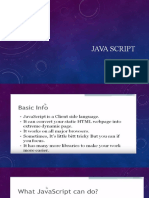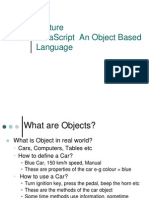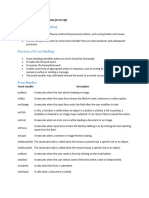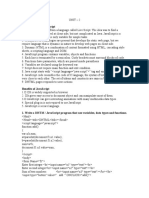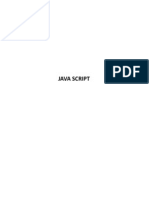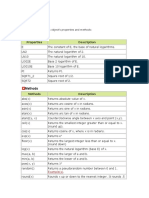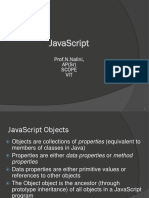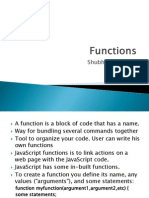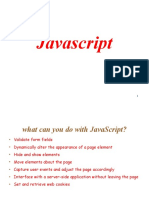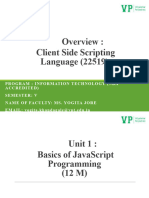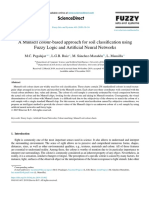0% found this document useful (0 votes)
56 views28 pagesL3 Types Object Event
The document provides an overview of the basics of JavaScript programming including features, objects, values, variables, operators, conditional and loop statements, and events. It covers key concepts like the window, string, date, and math objects and their properties and methods.
Uploaded by
Aryan KCopyright
© © All Rights Reserved
We take content rights seriously. If you suspect this is your content, claim it here.
Available Formats
Download as PPTX, PDF, TXT or read online on Scribd
0% found this document useful (0 votes)
56 views28 pagesL3 Types Object Event
The document provides an overview of the basics of JavaScript programming including features, objects, values, variables, operators, conditional and loop statements, and events. It covers key concepts like the window, string, date, and math objects and their properties and methods.
Uploaded by
Aryan KCopyright
© © All Rights Reserved
We take content rights seriously. If you suspect this is your content, claim it here.
Available Formats
Download as PPTX, PDF, TXT or read online on Scribd
/ 28






